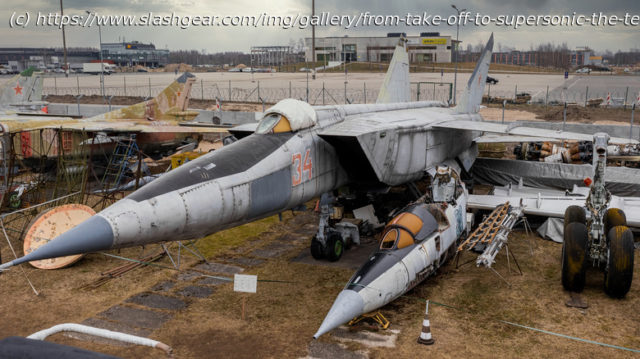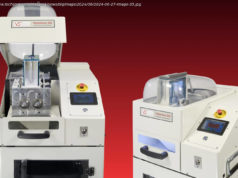Going faster than the speed of sound requires precise engineering and technology to pull it off. Here’s what goes behind supersonic military jets.
Flight is a difficult notion to wrap your head around. Additional complexities, such as how tricky helicopter landings are performed or the mechanics of supersonic flight further complicate our understanding. Fighter jets in particular are capable of truly astonishing feats of agility, as any airshow admirer will tell you. Maneuverability can be key in enabling such aircraft to perform their combat/pursuit roles, and so these abilities are far from just for show. Another of their most unique capabilities is their raw speed. Guinness World Records declares Russia’s 1978 Foxbat, the Mikoyan MiG-25, to be the fastest combat jet (the ‚combat jet‘ specification separating the Foxbat from other aircraft that can hit even greater speeds), noting that „the reconnaissance `Foxbat-B‘ has been tracked by radar at about Mach 3.2 (3,395 km/h 2,110 mph).“
Traveling at over three times the speed of sound, needless to say, is the exception, not the norm, and your average Airbus can hit only a fraction of that. Even for aircraft that can achieve supersonic speeds, their ability to reach and maintain them is limited by the realities of that same flight. Technologically, supersonic aircraft are very different from their subsonic counterparts, and a supersonic flight itself is a very different sort of feat. Here are some ways that a supersonic aircraft’s anatomy deviates from its slower counterparts, the components that allow it to achieve such speeds, and what happens during the course of the flight of an aircraft like the MiG-25.The rocket-powered Bell X-1 and the development of supersonic flight
Humanity has been wielding supersonic aircraft for almost eighty years, since Chuck Yaeger’s iconic flight in October of 1947. Part of the impetus for this experimental flight, of course, was simply to demonstrate the exciting possibility, but it was a journey that would be the forerunner of the supersonic aircraft of today. The Bell X-1 reached Mach 1.45 on its fastest trip, an astonishing feat for its time that was performed by an aircraft with both enormous similarities and differences to the fighter jets that followed it.
It is important to note that, unlike the low-bypass turbojet engines that power military jets today, the X-1 was powered by a rocket engine. That said, it still helped engineers understand flight at such blistering speeds. The long and thin metal body followed a design philosophy that would become rather characteristic of fighter jets, including a stabilizer that could be adjusted to help support it at great speeds and wings that were resilient without adding a great deal of weight that could compromise performance (a particular concern for an aircraft that already had to house around 500 lbs of scientific equipment).
The smooth, bullet-like design of the aircraft was a forerunner of drag-reducing capabilities like the carefully balanced thrust-to-weight ratio of the United States Air Force’s F-15C and D (which weigh 31,700 pounds and have a thrust of 23,450 pounds in each of its pair of F-100 engines). The F-14 built upon the swept wing configuration of fighter jets more broadly by making the angle adjustable, thereby allowing the plane to respond to the effects of drag and mitigate them whether flying supersonically or not.The engines that power supersonic aircraft
In the United States‘ arsenal, the F-15E Strike Eagle is one of the fastest fighter jets ever made. At approximately Mach 2.5 or 1,875 mph, it’s an astonishing aircraft with a sleek and aerodynamic body. To achieve such pace, the most important thing an aircraft needs is an engine that is actually capable of it in the first place. The Strike Eagle boasts dual F100-PW-220 or PW-229 engines. Armed with such a sophisticated and potent powertrain (each PW-229 can provide 29,000 lbs of thrust), the aircraft is capable of flying at heights of up to 60,000 feet and has a range of 2,400 miles.






